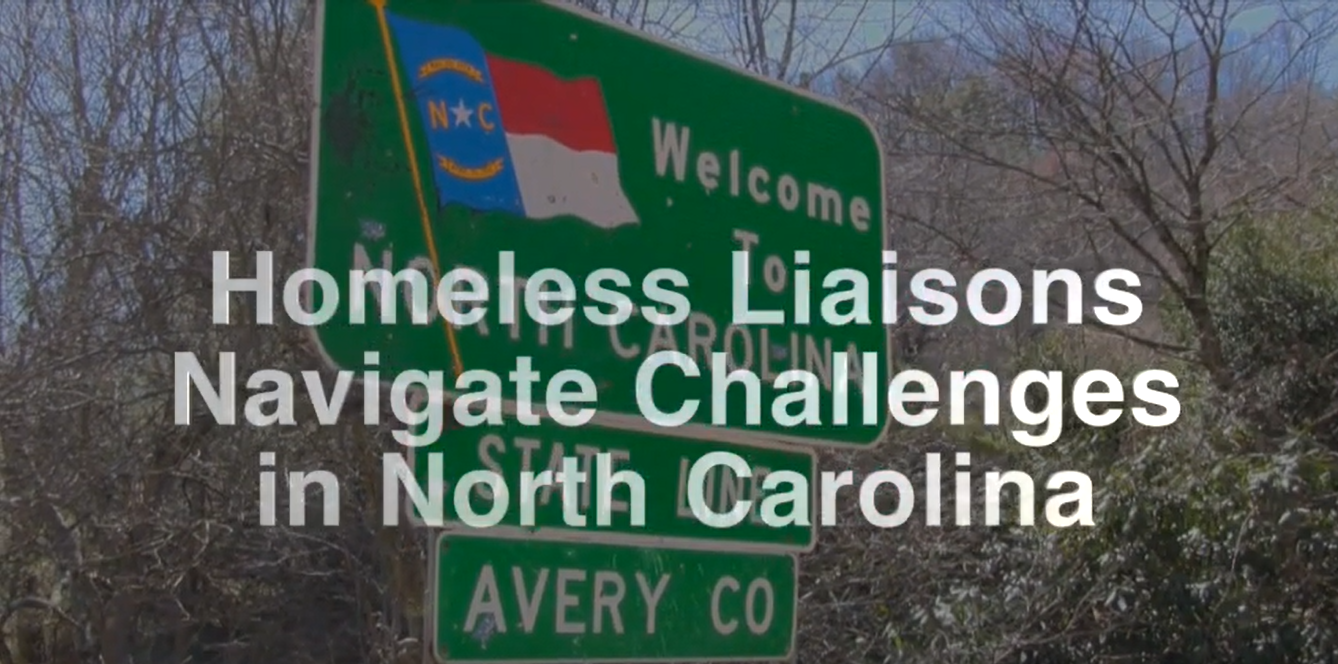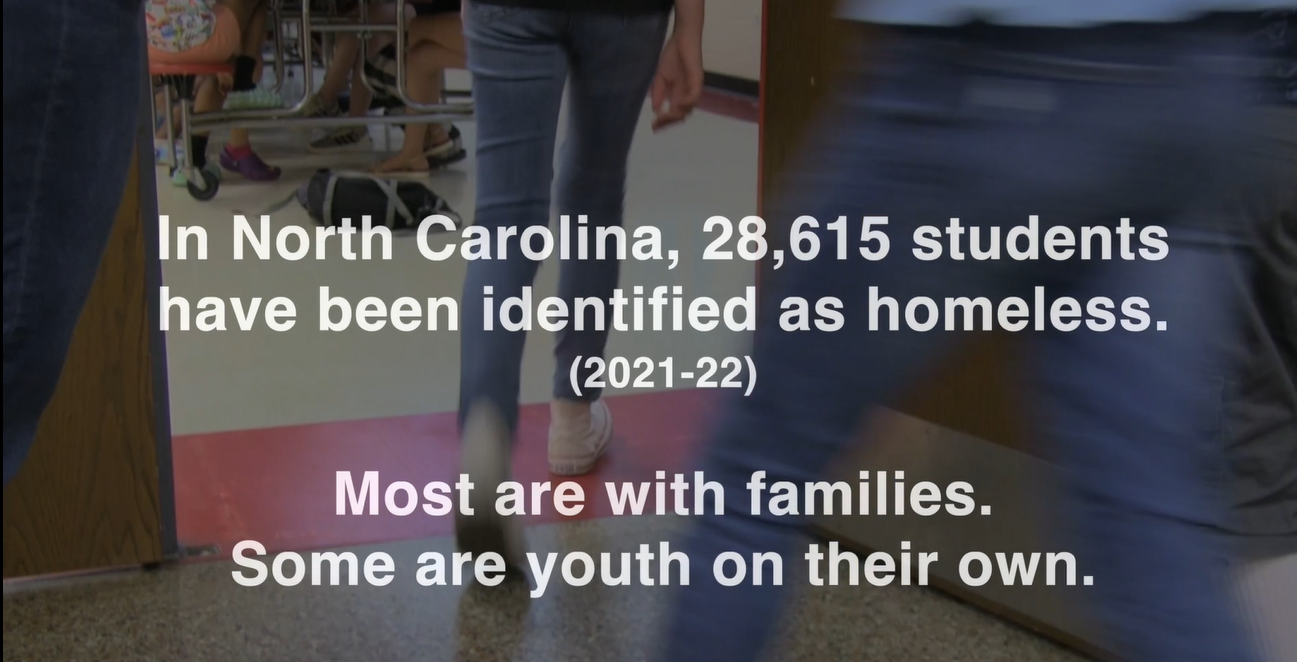About NCHEP
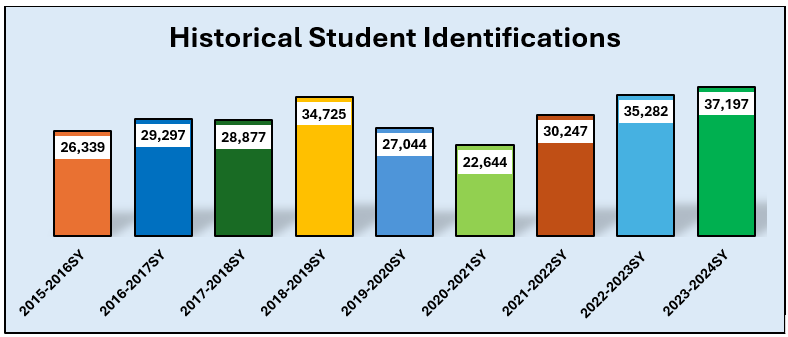
During the 2023-2024 school year, North Carolina public schools reported 37,197 students enrolled in grades PK-12 as experiencing homelessness. The housing instability faced by these students is associated with a range of acute needs, including transportation, food insecurity, health care, and emotional and mental health. Homeless liaisons identify homeless children and youth, ensure school access and stability, provide direct services, and coordinate with community agencies to meet basic needs. Their dedication to the work in NC has provided this increase of students to receive the services for which they are eligible under the McKinney-Vento Act.
While the majority of NC students experiencing homelessness live in the more populous regions of the State, both urban and rural regions face unique challenges in identifying and serving the educational needs of these students.
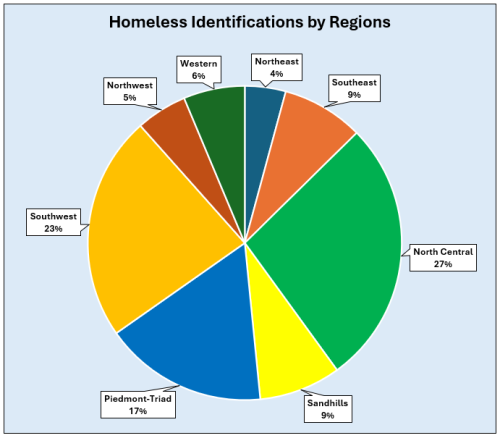
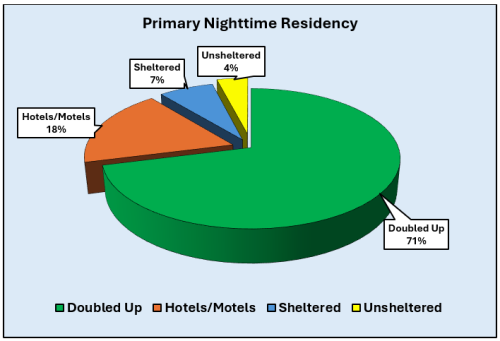
North Carolina public schools report data for the type of primary nighttime residence used by students based on four categories: doubled-up, shelters and transitional housing, hotels or motels, and unsheltered. The doubled-up category includes students who are sharing housing with others due to loss of housing, economic hardship, or a similar reason. The shelters and transitional housing category includes all types of emergency, family, youth, and transitional shelters. The hotels or motels category includes students residing in hotels or motels due to a lack of alternative, adequate housing. The unsheltered category includes students staying in substandard housing, cars, parks, abandoned buildings, or other places not meant for humans to live. It also includes students staying in temporary trailers and campgrounds due to inadequate alternative housing.
Historically, the percentage of homeless students living in a particular type of housing remains relatively stable, with students who are doubled-up composing approximately 71% of all students experiencing homelessness at the point of identification by the homeless liaison.
Shelters are not available in all areas of the state. They may be full and have stay limits for families, which contributes to the large number of doubled-up identifications. When living in a doubled-up situation the family or youth may be confined to one room or area of the house, live in fear of being kicked out, and feel additional stress due to the overcrowding of the environment. Students experiencing homelessness living in doubled-up situations often lack sufficient sleep and a space to study which leads to them being unable to perform well in school.
Serving NC students who are experiencing homelessness from special populations is a key component of the work of the homeless liaisons. These students may face compounding challenges due to their circumstances.
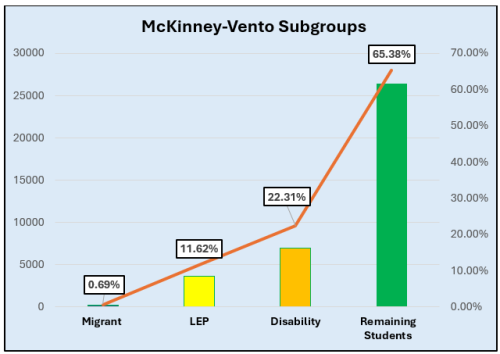
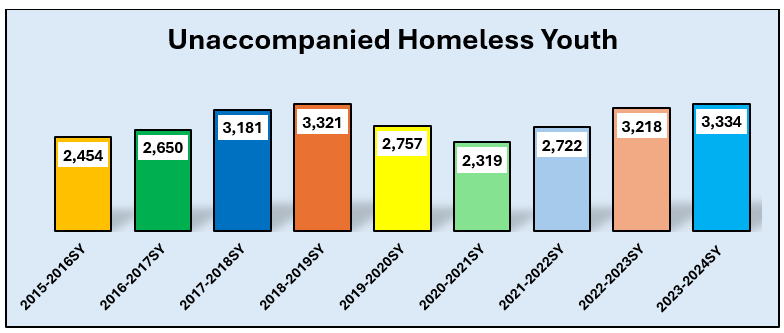
Unaccompanied Homeless Youth (UHY) are those children and youth who experience homelessness (lack a fixed, regular, and adequate residence) and are unaccompanied (not in the physical custody of a parent or guardian). Approximately 9% of the students experiencing homelessness during the 2023-2024 school year were UHY in NC and Nationally. Homeless liaisons are conducting targeted outreach to assist in the identification of UHY, which is the first step in ensuring they receive the educational support needed to succeed.
Homeless Liaisons Navigate Challenges in North Carolina
Every school district nationwide has homeless liaisons, the mostly unsung champions for students experiencing homelessness. North Carolina has a well-trained cadre of homeless liaisons serving students and their families. The video takes you across the state to see and hear the homeless liaisons in action.
Caring Schools Make the Difference
Family and youth homelessness comes in many forms. Schools are the constant island of security. In this video courageous moms and youth share their stories with hopes that the viewers will learn more about the challenges of homelessness and the importance of school officials who help however possible.
The Federal Data Summary School Years 2016-17 to 2018-19: Education for Homeless Children and Youth report reflects data presentation and trends for which the U.S. Department of Education has collected annual performance data from all states for the Education for Homeless Children and Youth (EHCY) Program since 2005.

